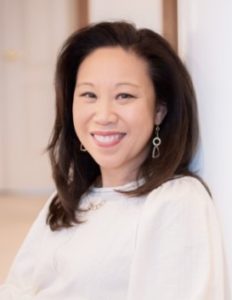 My guest for this podcast is a human-centered future of work expert, a business and marketing strategist, a business owner and a podcaster – Connie Steele. Connie is also the author of the bestselling book entitled Building the Business of You: A System to Align Passion and Growth Potential Through Your Own Career Mashup.
My guest for this podcast is a human-centered future of work expert, a business and marketing strategist, a business owner and a podcaster – Connie Steele. Connie is also the author of the bestselling book entitled Building the Business of You: A System to Align Passion and Growth Potential Through Your Own Career Mashup.
With over twenty years of combined Fortune 500, mid-size company, and startup experience, Connie has always been intrigued by the “why” behind companies and careers that thrive. She studies the reasons behind people’s attitudes, beliefs, motivations, and behaviors, what we as people really want going forward, and how it impacts the way we will work and live.
Also with the combination of her expertise, experiences, and beliefs, Connie came up with her book Building the Business of You. It is the first book to help professionals and entrepreneurs navigate the new world of work while aligning personal purpose and professional advancement.
To know more about Connie, her book and other amazing and inspiring works, you may visit her website by clicking here.
I hope you enjoy this engaging interview with Connie Steele. Thank you!
THE BOOK
Building the Business of You is the first book to help professionals and entrepreneurs navigate the new world of work while aligning personal purpose and professional advancement. Here, Connie shares the trends of tomorrow so professionals, entrepreneurs, freelancers, founders, and side hustlers can “skate where the puck will be” and form their own career mashup.
THE AUTHOR
A human-centered future of work expert, a business and marketing strategist, a business owner and a podcaster. Connie’s mission is to help people and the organizations they work for achieve meaningful fit in their pursuit of progress. In today’s new world of work, the definition of success is fundamentally shifting. Hence, she is passionate about delivering perspectives that provide clarity in this ever-changing world. Aligned with her mission in life, she is also creator and host of the Strategic Momentum podcast and the founder of management consultancy Flywheel Associates.
You may also refer to the transcripts below for the full transcription (not edited) of the interview.
Greg Voisen
Welcome back to Inside Personal Growth. This is Greg Voisen, the host of Inside Personal Growth. And we have joining us and now Connie, remind me where you are.
Connie Steele
I am in Leesburg, Virginia., so right outside DC
Connie Steele
Leesburg, Virginia is Connie Steele. And we're going to be speaking about a new book she has out, put it right up to the camera. Building the business of you the subtitle is a system to align passion and growth potential through your own career mashup. And, you know, we're living in such a changing time that that's so important. And what you do is so important, and I'm going to let our listeners know just a tad about you. She's a marketing and strategy executive. And she'd spent much of her career in the technology space. And she says, after 15 years in the corporate world, working with companies of all sizes, she decided to make a pivot nine years ago to regain control of her life and subsequently find personal and perpetual professional fulfillment. You can learn more about Connie, by going to her website, Connie - c-o-n-n-i-e-w-s-t-e-e-l-e.com I think that's page where it has her bio. But it's just conniesteele.com. Right?
Connie Steele
conniewsteele.com
Greg Voisen
Okay, well, we have the W in there, I wanted to make certain of that in there, what you're going to get is information about consulting, speaking, this book, her podcast called strategic momentum, log research. And she has done quite a bit of research. And you know, kind of, Connie, before we get in to, you know, you telling a little bit about more about your background, I've the way I Found You was through LinkedIn. And then what really intrigued me was the research paper that you wrote, maybe to set a context for this whole podcast. Once you tell the listeners what you found out about where the workaday world is going, what's happening to people and the trends that are going on, because I think people would be really interested in that.
Connie Steele
Sure, well, one of the most important things I think, for people to realize is that uncertainty is the new certainty and change is constant. What people are looking for now, and many of you probably have seen this in the news as a result of the great resignation. people's definition of success is fundamentally changing. They are looking for meaning not just money, they want fulfillment, they want to pursue work that fulfills their passion that has a purpose. A lot of this too, is driven by the funnily changing dynamics of the workforce composition, we now have for some will say five generations in the workplace. The millennials are the largest. They are digital natives. And they've grown up differently. They have a focus of wanting to do better, be better very aware of this need to have that balance of their mental health and physical health and what they do. But they also want to really deliver an impact in the world. And given them a venue. actually haven't been a bit older than that. But it's something in which I guess I've also realized I'm very much like that. But at the time, when I grew up, it was very much a straight line path. There was a programmatic net was guaranteed our perceived guaranteed way of reaching success. But now that's changed with this shift in the composition of workforce. Again, you've got two generations who think differently, Gen. Z's are very impacted, focus on one online, their passion and purpose. They have had a level of optionality as a result of technology that has enabled them to pursue different paths, pursue different interests, learn how to monetize things differently and know they may even think about being influencers, creators and so forth, and start with wanting to be the CEO from the very beginning. So once you have that context, in addition to again, the other generations that are there, it's important to realize, well, what's happening, why is it happening? What are people really looking for, and it's not a one dimensional pathway to achieving that level of success. It's actually multimodal. We are multi-dimensional. So we're multifaceted. So there's been funnily this shift from this linear, sequential, somewhat conformist and rigid approach to how we achieve what we want in our career, or even, I guess it was moving up the ladder was that original goal. And those goals also in the past were much more narrow. People were focused on money, title and power, that has shifted to one that's much more fluid. Multimodal, multi-dimensional, is one in which people want to really express themselves be their whole selves, that's about individual agency. And so what you see is this, just this convergence of physical, digital purpose, also profit, work and life. But people want to integrate that. It is not, again, a very siloed way of looking at things. It's very integrated
Greg Voisen
with your foresight and wisdom, because this is something that you've researched. And you've spent all this time looking at and you consult with companies on this. If you were to see around a corner, Connie, and look at the workforce of the future. In other words, let's project out 2530 years from now. I've heard all kinds of futurists say all kinds of different things. But I'm interested in your perspective, as someone with tremendous foresight, wisdom, knowledge and expertise in this area, as to what is this new workplace look like. And actually, I even told Stephen R Covey the other day, you know, in his book, trust and inspire, you know, from command and control cultures to trust and inspire cultures, the word work is wrong. It actually has to be removed from the vocabulary, but we use it so much everywhere. That it, it just seems, it seems like a wrong definition.
Connie Steele
I would agree because work doesn't feel or sound fulfilling. People want to achieve a level of fulfillment, and purpose. And so when I talk about the future of work, it's getting back to being human, it's really human centered. We've seen over the years also as a result of technology, that there's been this almost over indexing, on productivity, on efficiency, because it's enabled us to do things better, faster, cheaper, but at the expense of taking care of ourselves thinking about what's best for us. And now you see this shift towards the power of really the employees now having more of the power and realizing Wait, you know, I need to have the time for myself, I need to figure out what fits me best. So when I think of what the future ultimately is about, it will be fluid is what I talk about in the book, because the rate of change will be just faster and faster and faster. This job hopping is that new advancement, purpose really will be the new pivot because people are really looking to find fit. It's not about, you know, force spinning themselves into something in which it might be the right thing, but they really want to be able to express all of who they are. Right? And that will be different. You see this shift in people expressing their identity, their personal identity at a much earlier age, and being comfortable with that. And inevitably, that will shift over time. But they are opened up exploring and understanding who they really are and have actually this depth of knowledge that many of us I didn't when I was younger, on what does it really mean to be all of me and when I can really just be me and whatever that may be. I know I will find that flow state, I will be able to find what truly can help propel me forward and help me reach my potential.
Greg Voisen
Well, you know, we have so many people today talking about happiness. There's a course at Harvard that's always over enrolled. And, you know, Dr. Sigma rouse speaks about happiness. I've had tons of people. And I think at the true center of this is around happiness. And you know, you came from a culture which was pretty rigid. You know, here we're speaking with Asian American woman who literally was brought up with that regiment. That is the way normally that happens in in your culture. Speak with us, the listeners, let him know a little about your background, your career with AOL, which you actually enjoy, according to the book, because you got autonomy, you got to be creative, you got to be innovative, and the beliefs that you had that were not serving you. In other words, I look at beliefs we carry around about who we are and who we have to be and doesn't serve us. And tell us why you believe that this book is important for people to read, if they're seeking something different, to transform their lives and career because you do give a roadmap in this book,
Connie Steele
I do. So much of this has been this journey to I guess, somewhat explain my own story. But I didn't even realize it at the time, it was that I was seeing this fascinating pattern of all these other really amazing people that I interviewed on my own podcast and trying to understand why what's going on and why. But my own personal story, as you've mentioned, I am a child of immigrant parents, I'm a first generation Chinese American. And in our household, it was all about academic excellence. And so it was expected that we obviously do the best that we could academically. So that would lead to opportunities in universities, which then lead to opportunities in top companies, which would then lead to getting jobs and moving up that ladder, and then finding that stable, successful role. But when I entered the business world, I thought it was a meritocracy. I thought, well, it's sort of that similar linear sequential pattern, that if I work hard, I do, as I'm told, I'll be recognized for my work, and subsequently, that will help me move up. But that's obviously not the case. Anyone who has worked in business realizes that there are lots of different factors and dynamics that happen. And I realized that because we have to think about people, there's a whole people dynamic, not just the output of the work you do. And I had no idea how to navigate that, and struggled, because I had understood the world to be binary, you do A, B, C, your grades are quite rigid, and it's very defined. But in the world of work, it's just not. I also learned in those experiences prior to AOL. So I'd worked in consumer packaged goods companies, while they were wonderful training grounds that there wasn't a fit. And I couldn't understand fully why. But it was through some of these experiences that felt like failure to me, because I thought it was doing the right thing. But it wasn't creating the outcomes that I wanted, that I knew that I had to really pursue something different. And that's when I got really hooked on technology. So at that time, this dates me know, in the late 90s, I was drawn by all the opportunities that the web was creating. And I wanted to be able to apply that I had always been right brain and left brain. But I was forced to be one, because it was the mathematical sciences, specifically, unfortunately, truth Asian stereotype that that was valued. And that's where I was pushed due to my parents. But I wanted to express that I knew I loved it, because I got exposed to it in the job that I had prior to going to AOL, and I realized, you know what, I want to make a shift. I know that being in a very quantitative role isn't the right fit. I want to move from that, which is marketing research, which I loved. But I wanted to move into marketing. So I could exercise that creative side, that innovative side, the right brain. So when I went to AOL, it just felt like a wonderful fit from the beginning. Because it wasn't so hard and rigid and structured. A lot of things didn't have a very specific roadmap to exactly how we needed to do it. A lot of the initiatives hadn't been done before. So you had to think in a different way, you have to operate a different way, you have to build relationships in a different way. Because of the structure of the company. It was one where it was a matrix. People may know what that is. But it isn't a hierarchy. So there wasn't a specific clear line of command. Actually, you had multiple people who are somewhat in charge, and you had to build the relationships with cross functional teams. Because we all worked together to successfully deliver it wasn't the sort of industrialized industrial line way of working where one function has one role. It's done and passed on to the next one. It was one where it was a series of amazing teams coming together to solve a problem. So because of this just different way of working this ability to learn earn other people's roles, see how it comes together, try experiment to determine what would create wonderful opportunities for users. That just felt, right. It was that entrepreneurial aspect, I guess that I had no idea that was really even an option. That made me realize there's just a different way to work. And it, let me be me, it brought out skills and talents that I didn't even know I had.
Greg Voisen
Well, I could see that knowing that the founder’s philanthropy work that he's now doing, and his wife is creating such a difference. I don't know, if you're aware, you probably know that. He travels around in a big motor home, and he helps inspire entrepreneurs. And I could see that about him and everything in the way he speaks and who he is. Now, you know, you spoke about fluidity, and fluidity is something that leads to flow. That's what people are looking for. Steven Kotler has been on here a zillion times with the flow Genome Project. And you have a black belt in karate, which is very linear. You know, it's like you have to go do this before you can do that before this. And Bruce Lee, you said was your big fan? But can you speak to the listeners about the importance of fluidity as it relates to career lives and why you think practicing flow leads to greater innovation, creativity, and success. And I might say that in karate, Bruce Lee, and everybody who teaches it, it's like, if you use the movement, the energy, the kinetic energy, you virtually can flip somebody, right? So you're saying, I'm not having to do something that isn't already there. In other words, I'm in the flow of it, I'm, I'm moving this person's body this way or this way. So speak about that. Because flow is something that so many people are speaking, are interested in, and many people are trying to hack it, in, the way they're hacking flow is, you know, they're doing anything that will raise their level of endorphins in their body by running an exercise that we know, that's one way to do it, there are people that are microdosing LSD as well, you know, they can get into the flow state. I mean, it goes into a lot of areas here, or they're going and doing Ayahuasca because they think that's going to help them get into flow state, what is your, what is your take on this?
Connie Steele
Well, you know, flow needs to feel effortless, because it is like water. So as folks who might also be fans of Bruce Lee, you know, his monitor philosophy be like water just really resonates with me, because it's not about setting it to one form. It's not about having a fixed mindset, per se. It's really about this growth and add activity, and it's about building who you are over time. So again, it's that shift from that linearity to fluidity, sort of the singular to multiple, it's not right or wrong, it's relative. And why this notion of fluidity is so important to careers, ultimately work is because it gets back to the point I made earlier about our personal identity. And what you are seeing is that people today, particularly those who are younger, are much more comfortable and confident and expressing their identity, and their identity may not be fully fixed. And that can be whether it's in their gender, or whether it's them their ethnicity, my kids happened to biracial. And so they will say, Oh, mom, because I'm Asian, I am like this, because I'm Caucasian, I am like that. And I've actually heard and seen that with other friends whose children are biracial. But we also have to recognize, too, that the ethnic composition of the American workforce is one that's also changing, and that many people are now paying homage to their ancestry and realize that there's just an incredible value and benefit to tapping into that and expressing that. So when we as individuals are realizing that we're just also not one role in person. So I look at myself, while I am a consulting business owner, I happen to be an author. I'm also a podcaster, but I'm also a mom. And during the pandemic, the context switching that had to happen was pretty intense. Yeah, so I had to fluid The switch as best as I could, between all of these different roles, to be able to accomplish the different tasks or projects that I had. And when you also take a step back that all of us have multiple roles in our life, our identities, just in general, are not just one thing, you are a podcaster, you are an author, you are a successful business owner, Greg, but you are also a husband, you are a father, you are a close friend to others. And so your identity switches, depending on
Greg Voisen
a grandfather, and a grandfather, who gives red envelopes to his show. Because my son is married to an Asian American, oh, I know that culture.
Connie Steele
To me, you know, understanding fluidity really is getting grounded in who we are as people today and how we are as people will be changing and acknowledging that not just from a demographic standpoint, but also just attitudinally. And what we're motivated by so when you look at this very holistically, you start to understand, well, you know, things really aren't fixed, because we're constantly adapting and evolving. I think one thing that's really important, too, is because there is constant change, and that our whole world is really on the internet to that we're now product and service on the web.
Greg Voisen
Yeah. And you stated that the only constant is change. I agree. Yes. That you, you proceeded to inform the reader that all the changes, such as mindset change, predictability, change, knowledge change, and you had a bigger list than that. But let's just say, what do you believe the new worker will experience? And how would you define, in your estimation, and we've been talking about this, but maybe we can get more to what you think it's going to look like and feel like the work of the future? In other words, if you were to say, what is that? What does that feel like? I think people relate or, or visualize what it's going to be like, I get that there's remote workers I get people aren't working from the office as much, and there's, they're at home, and so they're there. But in essence, if you were to dig in, dig to the root of it, how do people manage the 24 hours, they're given every day, it is a gift, because we never know if we're going to have it the next day, to manage all these elements of their life that you were just speaking about you were talking about being a mom and, you know, you during COVID, I'm guarantee you are a teacher as well, you know, so, and then being a businesswoman, and being a podcaster and all these things. And I see that and I get that we've moved so fast, Connie, that it's we haven't been great adapters to change. We are forced to adopt technology for change. But I'm I see there's still some resistance, right. And I think what you resist persists, which is then painful, becomes very painful. And there's a lot of people out there that are listening that are in pain, and they're suffering.
Connie Steele
Change is hard and change. That fear of change. And there's a chapter in that book that's all about preparing for change, that what I've learned really stems from this fear that we have this fear of failure, this fear of shame, this anxiety that we have, that we won't be successful in whatever it is that we want to pursue next. But to answer your first question about you know, what is that future look like? What are people looking to pursue and how to get there? Well, what I note in the book where this is all moving towards this people want to create their own career mashup it is how do you really integrate all these different facets of you, those interests, those experiences, those talents, that education into a career that lets you reflect all that you can do all that you can be and that's going to be iterative, and that includes the personal and profession. Rational. And it's one where you don't feel boxed in. Now, it's not necessarily easy to do. But once you have clarity that what you want to do may not be this one role that you see, because most people are out there just saying, Oh, well, I'm going to find this job and I think this job or this title, is it, inevitably, it isn't always it. What you have to do is do that self evaluation of yourself to say, what is it that I really want, and realize that there might not be one path to doing so inevitably, there isn't, particularly when you've got multiple goals, which many of us do, if you think of it as a linear equation, so we're going to be the mathematical self, if you have multiple goals, and they are now somewhat equal in weight, there's no one direct pathway to get there. So that future involves people side hustling, which we are seeing more and more and more. And it's not just for just financial security, or risk management. But it is a way for people to be able to tap into those interests, that they have those talents that they have, that fulfill a different side of them. Some of them may be paid, some of may not, but they are building relevant skills that could be applied to their job. Or they may be actually building a foundation for a business that that might pivot into in the future. Funny enough, my brother had mentioned that person, he knows they work, I believe in their office, but on the side, they do their Mazouz. So they're side hustling a tune, and it's my, my daughter, my brother is a doctor. So she helps with the administration there. But it's very interesting to learn about this other role that she has. So I think you'll for people to be able to create this career mashup though, what I found in several of these podcast guests that I interviewed, what they were doing is strategic planning for themselves, they realize that they are a business unto themselves. And we have to now we are product and service on the web. So just like the companies that we work for, we have to look at ourselves in that way to that to achieve what we want. Creating that strategic plan, where we have clearly defined what it is that we ultimately want to achieve, what is that goal. And those pathways to get there will help us determine whether or not we're on the right path, or we need to pivot. But unfortunately, a lot of us are not taught that in school. And if you don't really do that as a profession, then it isn't something that you necessarily get exposed to. And it wasn't until I saw this common pattern of all these people that I interviewed, that they were really mapping out their plan, but constantly iterating over time, because I realized that they would build, you know that initial pathway, determine what fit and what didn't, pivoted, and it was just almost data that they pulled in, to then help them identify, this is the next thing I need to do. So it was all these building blocks.
Greg Voisen
Well, your book will help those who are confused. That's what I'm here to say. Because, look, you've spoken about all these elements. But at the core of this, we're still in this skin. And we still have this mammalian brain that likes to protect us. And Action sometimes doesn't take place. I was on a did a podcast with a social biologist the other day about her book called on the verge. And you know, we seem to wait a long time to take action. In other words, it's almost like it has to get right in front of us. And there has to be a threat, flight, fight flight or freeze, right. And I'm talking about the psychological effect, because this is a show on inside personal growth. And what I'm encouraging you to do would be to get Connie's book, if you're in that state of what do I do next? What's the action that I need to take? If you need to read something, find something to read like this, that gives you at least a spark to move to the next direction to go. And if you would speak with the listeners about what you refer to as the fluid career system, and the five components of this system, because that part is probably at its core, a big part of this book. And I think it is something that you can articulate pretty well in a short period of time to tell people that this is how you can do it. But I am going to encourage them to get the book.
Connie Steele
Sure thing. So these five components really is the foundation to help you build this strategic plan. Think of it as research, analysis, and really implementation. And it starts with spine, the trends, which is the first component. This is all about doing the necessary research and analysis to understand near term and long term opportunities based on market trends, competitive trends, and really your own trends know you a lot of times we don't take the necessary time to understand what's going on out there, but also align it to who we are, where do we play best? What value do we deliver? Once you're able to really ingest all that information and see those common threads, it will start to really coalesce all these ideas that you might have had on what you want to do, and a much more data driven way objective way, because then you're going to take that information to help you build this compass. So the second components while creating your compass is actually mapping out a more detailed plan. And there's a framework involved, called the ghost method. So for people who do strategic planning, they'll be quite familiar with it. But it's goals, objectives, strategies and tactics. And that is just a specific framework to help you organize, how to reach these specific milestones. And it not just be a checklist, because a lot of us tend to write down a bunch of tactics and a list but don't ladder that up into whether or not that makes the biggest difference, and helping us move towards where we want to go. The next piece is called Preparing for change. Because once you have a plan, and you get excited, how many of us start to think, and maybe put some things in place, and then we stop. Because we get really nervous about whether or not we can do it, because the task at hand, may feel insurmountable. So this is really about change management for you. It's understanding what is causing this fear that you have of not moving forward. And doing that introspective work of realizing where is that fear coming from? Next is networking. So as part of any strategic plan, you need people to help you get there. But there is a way to build a relevant network that can support you towards your goals. It's not that transactional dynamic that you see quite often, it's one where you need to build a great relationship with someone be very clear on what it is you're looking to do, but also, in turn, help the other individual. And so when you have that plan, and that second component, you're going to be better at able, you're going to be better able to articulate to these people what you're looking to do, but it also gives you a guide as to who you need to talk to, in order to accomplish this, this goal that you want. And then lastly, it's about building your skills. Obviously, that should be part of creating your compass. But what we focus on specifically, is building those soft skills, and particularly EQ. In today's world of work, connecting with people reading people's emotions, you're having that personal awareness, that social awareness, the personal competence, that social comments is so important. Because in order to really create that momentum, in whatever it is you do, you really need to understand people. And that is something I wish I had learned early on. That was, I think, one of the biggest aha moments I had when I had started my career. Because I didn't understand any of those components, I didn't realize those factors can be an incredible kind of driver of action for you. But when you aren't versed in that, and you don't have a mentor or advisor to tell you, you hit a wall, and you're not then introspective to on what those factors could be. So those are the five components. And they work together while we teach it sequentially. It really is an iterative system,
Greg Voisen
you have a course as well that people can take that's there. So this is probably a good time because you will get this from the book. But she's also got a course. What is the course that my listeners could tap into? And where is that?
Connie Steele
Well, you can find that on my website. We're actually going to be having a self-administered course coming out quite soon. So by the time this podcast airs, we'll probably all be ready to go. Okay, but this is all about building those skills in more depth. Because sometimes having those specific exercises which we have a few in the book, and we have done a course actually live we first started doing them live but now we want to make sure that we can reach as many people as Paul Last fall, but we want to be able to do some more specific exercises that force you to do the necessary thinking and activities to help you really ingrain how to build that plan.
Greg Voisen
The other thing you should do for my listeners is, she has a podcast called strategic momentum, you can just type that in Google, and it's going to pop up strategic momentum podcast, or you can click on it at on our website, which we're going to have links on our website as well. Connie, you know, you in your chapter on creating your compass, you talked about building the strategic plan, you speak about how to build the plan, which you did the four elements. You put a chart in the book about the psychology of change. And I think that that's what I was alluding to a minute ago, is, can you discuss this model, and also the steps that we can take to move beyond the fear of change, because we've talked about change itself. As I said, a lot of people, you know, it's fight flight or freeze, and now it's there, they're going to run the other direction, they're going to freeze or they're going to fight it. What would you state about that model, and also how you could help my listeners move beyond it?
Connie Steele
Sure. So this model, it all really this emotional cycle change, it comes from Darryl Connor, who is a change management expert. And it was actually developed in the mid 1970s. And it's really about researching how people react to change and as five stages. And as you think about sort of the cycles that we all go through these ups and downs, the peaks and troughs, kind of envision this model like that, where you start with this first stage of uninformed optimism, you, you feel certainly, that you could do this. But then as you start to move towards operationalizing, it, there's doubt, because you get some sense of scope and level of effort. It's also very different, potentially, than what you've done before. And that can create a lot of angst, because it's not maybe within your wheelhouse or something that is quite predictable for you. So oftentimes, people check out. So as you think of you're starting off, at sort of the lower part, and it's starting to move up you, you have this important pessimism, doubt people check out and they leave. But then if you can crest that, and you push past that doubt, you reach this level of hopeful realism, that's stage three. And then once you start to see some success and get those signs, you reach the stage of informed optimism, you build that confidence. And once that confidence continues to build, you see more successes, then you reach stage five, completion, and satisfaction. But it is these ebbs and flows that you always have, and those amplitudes that you likely have of the informed pessimism because I think everyone goes through that. And being able to crest towards hopeful realism, we become lesser and lesser, so you won't have as high of an amplitude, the more you do it, the more comfortable you get with trying. And the way to push past this comes down to understanding what those triggers are, that cause this fear and concern and this pessimism in the first place. And doing that analysis of diving in and said, Well, what is it? What is that situation that you are envisioning? That is causing this fear, anxiety and even shame and then linking that back to what could it be in your past life? That could have been the real trigger? And then based on that particular context, you what did you learn from it? Likely you're able to push past that? And how did you pivot? So again, this all goes back to really understanding you. And the question becomes, how likely is this to happen again, because many times we catastrophize the situation, right? We always assume the worst, whether that's reality or not, you know, that's really for you to kind of pick apart and realize, likely it isn't. And so, the next thing you do is do another exercise is list out the likely outcomes. So if you're, if you are afraid of something, do that introspection, map out what has happened and say, these are all the outcomes that can happen, but how likely is it? What are the positive outcomes? Where are the negative outcomes? It's kind of doing like a pro con pro analysis, right? You become much more objective about it. Then you could see Wow, a lot of this likely is in my head. I'm just nervous. But if I do this, the pros definitely outweigh it. It can't. So why don't I just try. And another thing to do is that and don't look at this effort as this big bang, everything takes small steps to accomplish, break that down into those finite tasks that make you comfortable, map that out and start chipping away. Because once you do that first task, which is which is aligned to what you're trying to achieve, you realize, Wait, that wasn't so bad. Let's do it again. Let's do it again. Let's do it. Again,
Greg Voisen
that explanation of that chart was it's really informative. And I think people, what you just said, allows them to look at the steps, even though there can be some troughs and valleys and in between peaks and valleys in between. Connie, as we wrap up this podcast, if you were to leave the listeners with three takeaways from our interview, and something that they could apply to their life and their careers, what advice would you want to leave them with?
Connie Steele
I'd say realize that the future of work, the future of you, is fluid, you will be constantly changing, evolving, growing to reach your own potential, and it won't be a straight line path to get there. And that's okay. And to find that right fit for you, that aligns your skills and interests, passions and talents, requires you to have a plan. And that plan really is that plan is going to be fixed, you need to start having a plan though, to get started. It's going to be iterated upon, as you continue to gather learnings about yourself in terms of what works and what doesn't.
Greg Voisen
Well, you call it the mash up, it can be messy. And you have to be willing to wade through both your emotional attachment to things and your ability to detach from certain things. And I think that Buddha said it really well. And one of the statements, he says you have pain and suffering. And then there's the end of pain and suffering, the end of pain and suffering is the result of you being able to let go and shift your mind. And I think one of the biggest challenges we have is we set a goal or an aspiration. And we've visualized or we think it's going to happen a certain way. And it hardly ever happens that way. You have to be fluid enough to accept it the way that it is going to happen. And not be so attached to the fact that you said what's supposed to happen with step 1234. That's the way it's going to happen. No, I can speak from experience, it never happens that way.
Connie Steele
Well, you are a career mashup or you're an early career mashup. So you, I'm sure I get intimately share what the experience is like, and sometimes you just have to go with the flow.
Greg Voisen
You do. And you know, there's so many things in life that affect it. You know, and so regardless of what we're dealing with now inflation in the war, and, and the challenge with China and that being in lockdown, and you know, how many things could we actually try and deal with right now. I mean, I think people are looking at the external world and their internal world. And I would just say, instead of becoming depressed over it, if you can remove yourself summit from it and do something, I always find doing something physical, like going on a bike ride or walking in the woods or going down to the beach or walking in the mountains or whatever it might be, or yoga or doesn't matter, meditation, do something that removes you from being in the center of the fire, you know, the fray. And at times, it feels like that I know. But Connie has given us hope that we can find a path. Here's the book, building the business of you. I will put a link to this and to her podcast. Connie, thank you so much for being on inside personal growth, sharing some of your own personal experiences, your wisdom, and then on your podcast. I'm going to tell people to go to strategic momentum podcasts because you're going to listen to interviews she's done with people that have gone through this. So Blessings to you. Thank you so much. And no Miss day. Have a great rest of your day. I appreciate you being on Inside Personal Growth
Connie Steele
I appreciate you. Thank you so much for having me on the show.
Greg Voisen
You're welcome
Sign up to receive email updates
Enter your name and email address below and I'll send you periodic updates about the podcast.
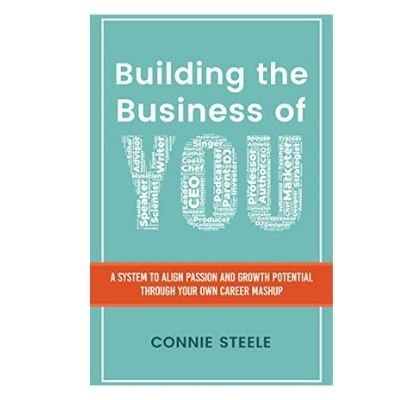
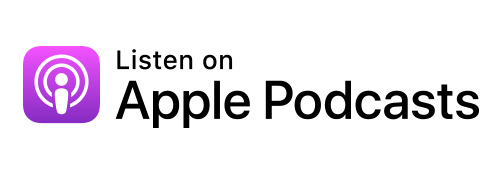

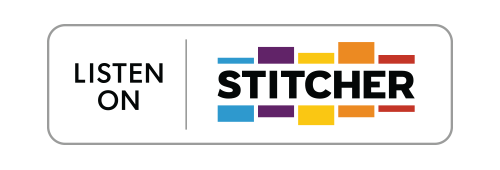

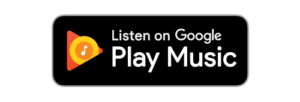
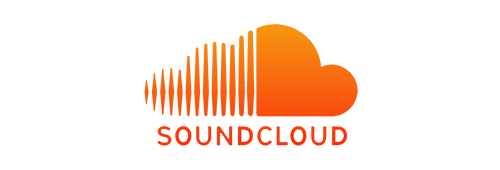

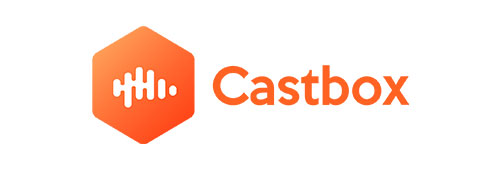
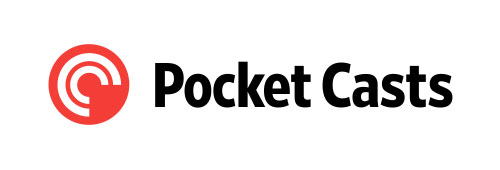
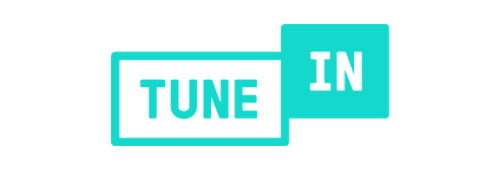
Leave a Reply